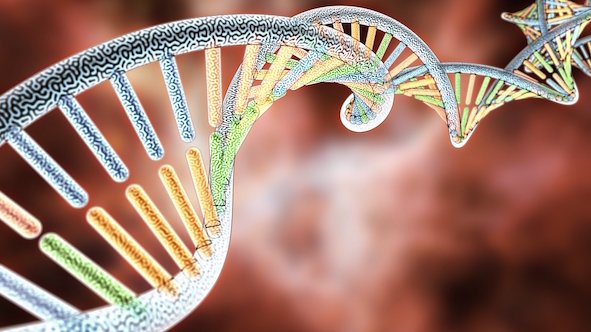
Image credit- shutterstock.com
In research endeavors to find a cure for many diseases, CRISPR/Cas9 has becoming a precise tool to modify the DNA in microorganisms, plants, animals and human. It also inspiration to the work of the French and American scientists, Professor Emmanuelle Charpentier and Jennifer A. Doudna, winners of 2020 Nobel Prize in Chemistry.
Normal adult hemoglobin (HbA) is composed of a tetramer of two α-globulins and two β-globulin subunits (α2β2). It is a main component in red blood cells (RBCs) to support gaseous exchange throughout the body. Mutation in the β-globulin gene (HBB) gene, however resulting in inherited disease such as Sickle cell disease and Beta-Thalassemia that are characterized by structural changes or decreased production of β-globulin. The management of the diseases is usually symptomatic, such as medications and blood transfusions. Up-do-date, bone marrow transplantation is the only known cure. Yet, it comes with unknown consequences such as graft rejection and surgical complications that heightened the mortality rates.
To conquer the barrier, Ministry of Science and Technology (MOST) of Taiwan has brought together various international institutions, including Taipei Veterans General Hospital (TVGH), National Yang-Ming University (NYMU), and the University of California, Los Angeles (UCLA) as a team. The team has set goals to combine both the CRISPR/Cas9 and self-assembled supramolecular nanoparticles (SMNPs) technology for finding a safe and universal treatment plan for the aforementioned diseases.
According to their results, a functional HBB gene has been knocked into the human blood cells, mediated by CRISPR/Cas9 and SMNPs via Ad-grafted silicon nanowire substrates (Ad-SiNWS). At the present stage, the team has successfully delivered the RNP-SMNPs complex into an in vitro model and the results were published in Science Advance on October 23 this year, marks the first milestone of this particular research.
The achievement also verifies multiple proofs-of-concept and technological breakthroughs in medical research, including: i) The combined strategy of two nanotechnologies serves as an effective delivery platform that can co-deliver Cas9•sgRNA and dDNA into blood cells; ii) The use of non-viral vectors to prove that the CRISPR/Cas9 technology can be efficiently used to edit long DNA sequences. The above results also have been filled for a medical patent, in the hope to bring benefits to both national and international communities.
Furthermore, the research team, led by Professor Chiou has previously applied the SMNPs encapsulated CRISPR/Cas9 strategy into the in vitro and in vivo disease model for treatment with X-linked Retinoschisis (XLRS) syndrome. The published data have showed promising results in improving the gene-editing efficiency (Advanced Science 2020 April).
This achievement creates a new platform in precise gene-editing, also a new therapeutic direction for the inherited retinal or hematopoietic-related diseases. Together with the international efforts and collaborations, Taiwan plans to accelerate the pace of the gene-editing and nanoparticles technologies into the clinical settings.




